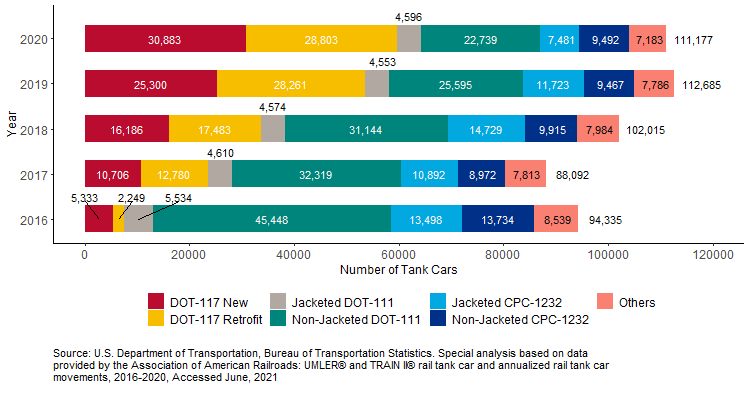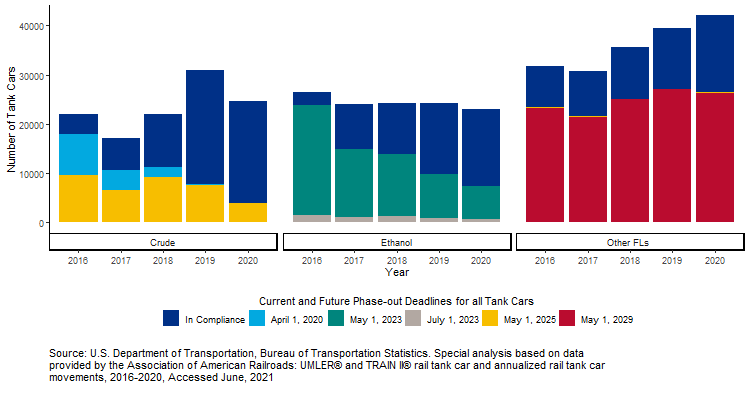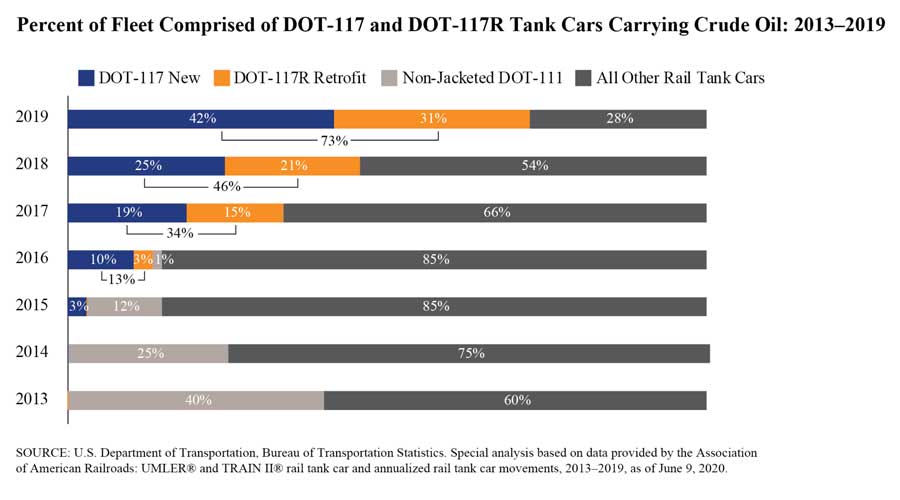More Rail Tank Cars Meet DOT-117 Safety Standards in 2020
Thursday, September 23, 2021
Crude oil fleet exceeds 80% compliance, up from 72% in 2019
More than half (54%) of rail tank cars carrying Class 3 flammable liquids in 2020 met new safety requirements, an increase from the 48% in 2019, according to the Fleet Composition of Rail Tank Cars Carrying Flammable Liquids: 2021 Report released today by the U.S. Department of Transportation’s Bureau of Transportation Statistics.
The 2015 Fixing America’s Surface Transportation (FAST) Act requires that, by 2029, all Class 3 flammable liquids are carried in DOT 117 or DOT-117R rail tank cars, which meet new safety standards. The new report measures progress toward this transition. Class 3 flammable liquids most commonly include crude oil, ethanol, and refined petroleum products. As required by the FAST Act, the report has been submitted to Congress.
Inventory of Rail Tank Cars Carrying Class 3 Flammable Liquids

A new deadline for 2020 was the phase-out of Non-Jacketed CPC-1232 tank cars carrying crude oil. While the report includes some trips by these cars carrying crude oil, all such trips occurred before the April 1, 2020 deadline. The remaining Jacketed CPC-1232 tank cars carrying crude oil are due to be replaced, retrofitted, or repurposed by May 1, 2025. Jacketed DOT-111s were required to stop carrying crude oil in 2018. Non-jacketed DOT-111s have not carried crude oil since 2016.
Phase-Out Targets and Dates for Rail Tank Cars Carrying Class 3 Flammable Liquids

In 2020, 111,177 rail tank cars were used to carry Class 3 flammable liquids, an increase of 15% from the 94,335 tank cars used in 2016. In 2016, only 8% of the fleet carrying crude oil and other Class 3 flammable liquids consisted of DOT-117s (new or retrofitted), compared to 54% in 2020. For crude oil alone, 81% of the tank car fleet in 2020 consisted of DOT-117s, up from 72% in 2019.
Survey results indicate that 7,413 DOT-117 and DOT-117R tank cars are projected to be built or retrofitted in 2021.
The annual BTS report is required under FAST Act, Section 7308. Additionally, Section 7308© requires BTS to estimate the anticipated number of DOT-117 tank cars for each year from 2018 through 2029 by collecting data from tank car shops that build or retrofit tank cars. It is expected that, by the end of 2029, all Class 3 flammable liquids will be carried in rail tank cars that meet or exceed DOT-117 specifications.
















